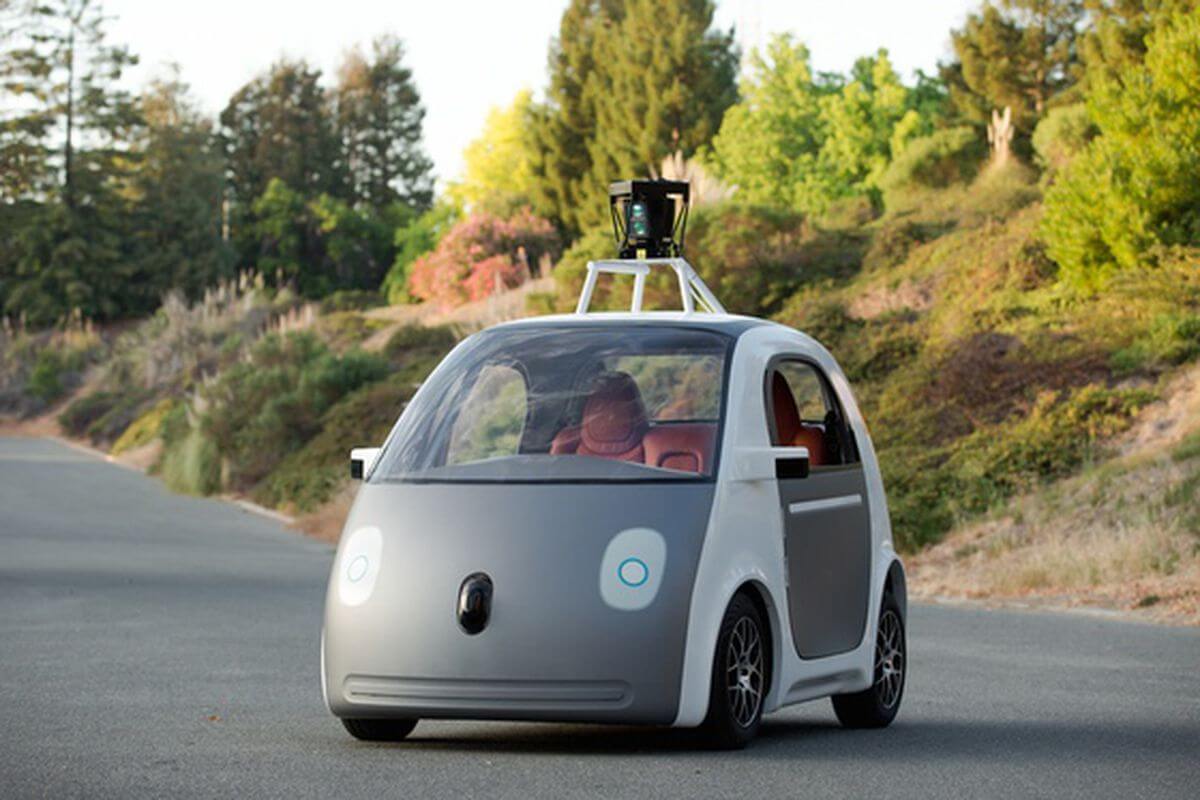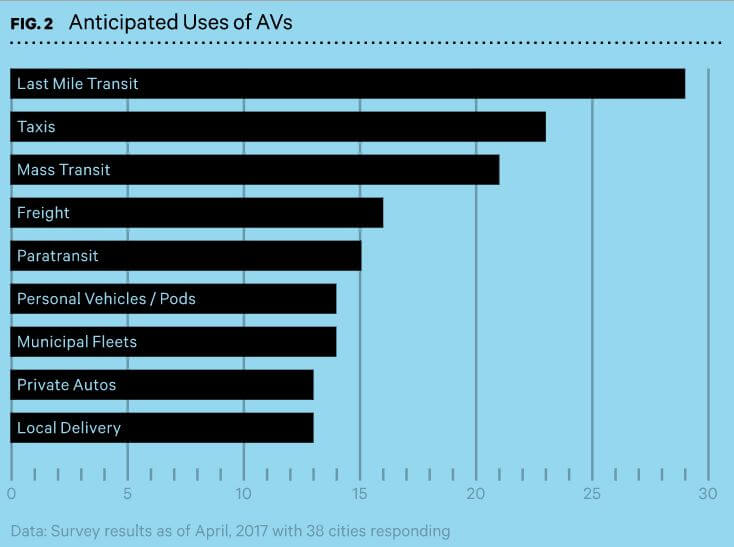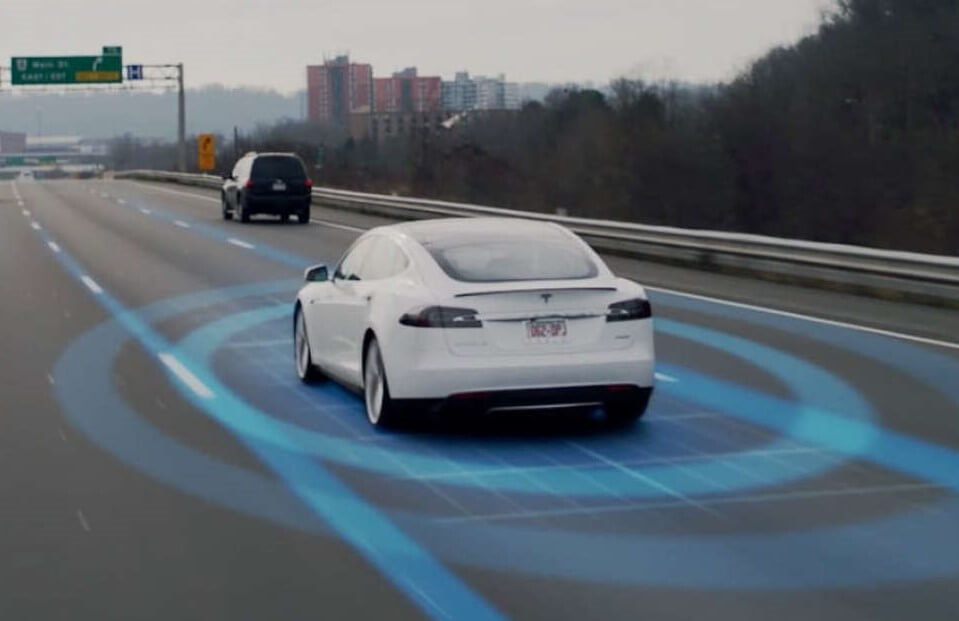Dear Reader, welcome to my blog!
My team mate and I are working on a life cycle assessment project regarding shared autonomous vehicle transportation for our industrial ecology course. I find this technology quite fascinating and felt inspired to write about it.
Efforts to improve the autonomous vehicle technology and make driverless cars a reality are increasing worldwide. Major tech companies like Google, automakers such as Ford and start-ups are constantly investing in R&D to develop better models. Meanwhile, some governments are working on policies and tests. The perceived advantages of this technology are primarily reducing congestion, aiding the last mile problem, increasing driving safety. In addition, it can also reduce global warming potential of transportation.
I recently came across Bloomberg Philanthropies’ initiative on Cities and Autonomous Vehicles. I found some interesting highlights that I want to share with you. The initiative presents the Global Atlas of Autonomous Vehicles, a map of cities that are either implementing pilot projects or preparing for AVs through policy and research. The Atlas serves as a portal to help cities learn from each other and calls on cities to take action in the regulatory aspects and management of AVs. Before going into the key take away, I want to talk a little bit about autonomous vehicles and levels of automation.
Autonomous Vehicles & Automation Levels

Autonomous vehicles are vehicles that can guide themselves without human intervention. They utilize technologies such as GPS sensing, sensors and other equipment to evade collisions as well as some augmented reality to perform various driving functions. Although this definition gives the impression of a super advanced car, autonomous vehicles refer to a broad range of cars with different levels of automation. There are 6 levels of automation defined by NHTSA in the SAE International’s document:
Level 0 – No Automation: You drive the car and have control over the braking and steering while you can be assisted by some safety intervention systems.
Level 1- Drive Assistance: You are in control of the functions and the car can automatically perform a specific function like steering or accelerating.
Level 2 – Partial Automation: The car can automatically control both steering and acceleration in some modes, while you should be in ultimate control. In this mode, you can have your hands off the wheel and foot off the pedal.
Level 3 – Conditional Automation: The car takes control of the driving responsibilities but it asks the driver to take control under some circumstances. The car can decide to change lanes and respond to dynamic changes on the road however needs the driver as a fallback system. Most car manufacturers are trying to skip this level straight to level 4 due to liability risks.
Level 4 – High Automation: The car can be completely drive itself (perform all safety-critical riving functions) without needing any human intervention. However, this does not cover every driving scenario. It may ask for human help in some cases but will park itself if human assistance is not available. Many developers are currently testing for this level.
Level 5 – Full Automation: In this level, the car is expected to have a driving performance equivalent to a (proper) human driver in all scenarios including extreme environments.
The most important deduction from the classification is that car’s driving system becomes capable of monitoring the environment starting at level 3.
Global Atlas of Autonomous Vehicles in Cities

Going back to the Global Atlas of Autonomous Vehicles; that the map currently displays 63 cities working on pilots (that are currently testing or are committed to test soon). It also shows 32 cities preparing for regulatory and planning processes (that have not started testing yet).
A survey conducted in 2017 by the initiative, we see that most cities see AV as a solution to solve the last mile problem which is the difficulty or lack of transportation to get people to their final destination from a transportation hub. Survey notes that majority of the pilots are testing for autonomous vehicle applications ranging from connectors between rail stations and employment centers to shuttles circulating within large campuses.

According to the survey (of 30 cities) the biggest challenge in going further with AV pilots, planning and policy are primarily lack of funds and lack of capacity to manage pilots.
In addition to the survey highlights, autonomous vehicles are expected to reduce traffic with their smarter guidance systems. Another interesting potential outcome is the increase in work productivity. As drivers become passengers, they can gain more productive hours day by working instead of driving during daily commutes. Furthermore, driving safety is anticipated to increase. A report by the consulting firm KPMG predicts that accidents will decrease by 80% by 2040. Consequently, this will call for a big change in the car insurance industry.
Another benefit of autonomous vehicles is the possible reduction in environmental impact, as most autonomous vehicles will be electric cars. Moreover, shared-ride transportation companies like Lyft and Uber are planning to make their fleets autonomous vehicles in the future. This is highly likely to further reduce land usage (roads, parking & garage space), emissions and congestion.
The Atlas points out that no city has approved AVs for public use, because there are still a lot of concerns and lack of knowledge. Furthermore, tests are conducted in environments where isolating the cars from the rest of the city is easy. Thus, the tests are still not engaging complex urban environments.
Conclusion
There seem to be great challenges to tackle to make these cars part of our daily life. However, it is important to note that all the initiatives and the technology is very new but the efforts are accelerating. As a result of population expansion: transportation problems like congestion, resource depletion and global warming threats increasingly call upon the need for these vehicles. Ultimately, autonomous vehicles will revolutionize the transportation industry and the way we plan and build our cities. I am excited to see how it can shape our futures, it will be a very interesting transition.
For those who are interested in the AV competition:
Business Insider released an article in 2017 on the self-driving car developers which presents a leadership grid. The grid points to GM and Ford as the top contenders. Here is a link to the article:

References
https://www.techrepublic.com/article/autonomous-driving-levels-0-to-5-understanding-the-differences/
Published on March 13th, 2018
Last updated on April 1st, 2021

